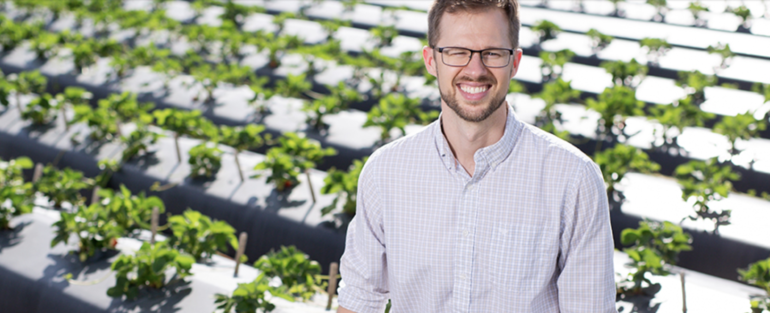A tastier strawberry may come from a computer. New University of Florida research shows artificial intelligence can help scientists breed more flavor into the fruit.
Consumer panels are the tried-and-true method for UF researchers to gauge whether new fruit varieties taste good enough to keep developing them for the market. But, in the evolving world of AI, a computer can now tell scientists what strawberries taste and smell like – and therefore, whether a variety is worth more genetic breeding efforts.
After all, strawberries are a $300 million-a-year industry in Florida – and many consumers crave them.
Vance Whitaker, a UF/IFAS associate professor of horticultural sciences, used an algorithm that gives him the ability to predict how a strawberry will taste, based on the chemical constitution of its fruit. The computer method also takes less time than volunteer test panels.
Whitaker published new research in the journal Nature Horticulture Research in which he and his team used taste-test panels and computer technology to identify the volatiles that give strawberries their unique tangy flavor.
Over seven years, 384 consumers came to the UF Sensory Lab in Gainesville to give their feedback on flavor and aroma of strawberry varieties. Whitaker and his team compared consumer preferences with results that came from an already established algorithm and found the volatiles he needs to boost in strawberries he breeds in the future to improve their flavor.
Machine learning algorithms are especially useful for analyzing “big data,” Whitaker said. In other words, when the data set is huge and involves a lot of variables at once – in this case about 100 different chemical compounds in each fruit sample and 100 consumer ratings for each sample – machine learning picks out patterns that previous statistical methods cannot.
Zhen Fan, a doctoral student majoring in horticultural sciences in the UF/IFAS College of Agricultural and Life Sciences — who works under Whitaker’s supervision — conducted the AI analysis for the study.
“Some volatiles are more important than others,” said Whitaker, a faculty member at the UF/IFAS Gulf Coast Research and Education Center. “Knowing this allows us to focus in on a few high-impact breeding targets. In other words, now we know which volatile compounds we want to increase in breeding to achieve better flavor.”
To do the analysis, you need the sensory ratings and the chemical data on the same variety of strawberry, said Whitaker. Additionally, samples of strawberries from the same batch of fruit were sent to the lab for taste panels and chemical analysis simultaneously. Volunteers and the computer gave ratings for various UF/IFAS-bred strawberry varieties, including Sensation ®, ‘Florida Radiance and ‘Florida Beauty.’
The algorithm uses those data sets and compares them.
Scientists found that if they can measure the sugars, acids and volatiles in each strawberry, they can predict with a high degree of certainty how good it will taste.
“In other words, you train the algorithm with both of those data sets, and it learns to predict the panel ratings from the chemical data. Basically, this helps us breed smarter for flavor,” Whitaker said. “We want to work both harder and smarter. Flavor is a big focus in our breeding program. Our new varieties have improved flavor, and that means the strawberries people buy will taste better.”
This story originally appeared on UF Institute of Food and Agricultural Sciences.
Check out other stories on the UF AI Initiative.

